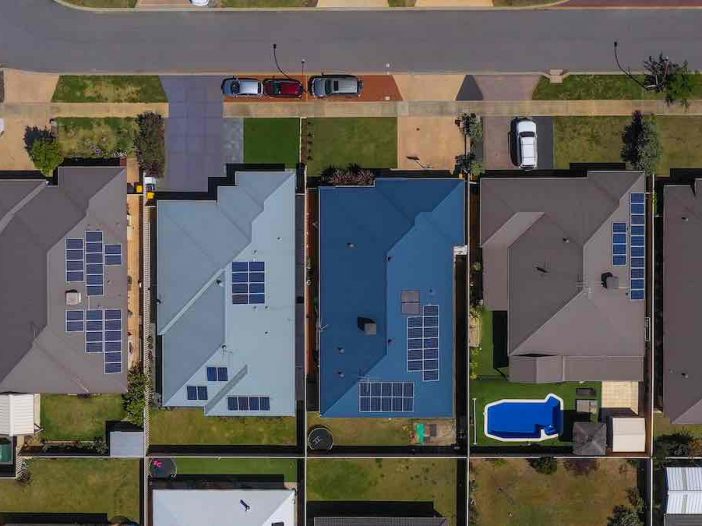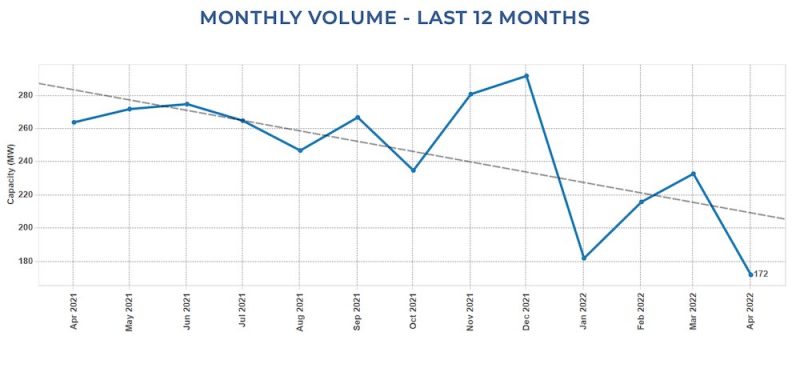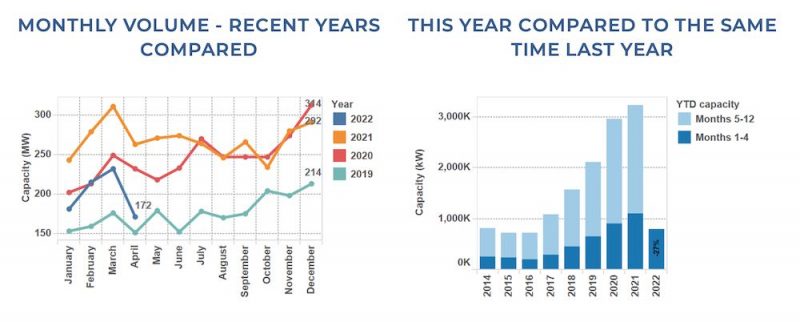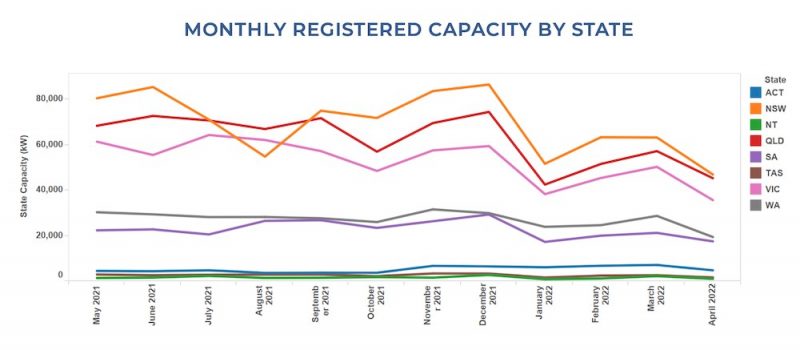
The installation of solar on the rooftops of homes and businesses took a big dive in April, suffering a steep 26% decline on the numbers recorded in March 2022 and bringing two months of growth to an abrupt halt.
According to the latest monthly insights from industry statistician, SunWiz, a total of 172MW was installed on rooftops around the country in April, a 62MW drop on the 234MW total for March, when the nation’s total for the year was increased to 630MW.
That is one of the biggest monthly falls on record, and the biggest ever non January drop.

SunWiz managing director Warwick Johsnton says the April hit to growth in the rooftop PV market is not altogether surprising, factoring in the typical lull in installations that comes with the Easter break.
But throw in recent cost of living increases, the forthcoming federal election, and economic uncertainty around inflation, and you the result has been the third-largest monthly drop in MW.
All told, the April 2022 slump puts the year-to-date tally a full 27% behind figures observed at the same time last year, and more in line with predictions of a year of softening for Australia’s world-leading rooftop solar growth.
“The fall occurred across every state. In percentage terms the fall was least in South Australia (-17%) and Queensland, and greatest in Northern Territory and New South Wales (-37%),” Johnston says.
“As the CER data trues up it begins to reveal December 2021 had far lower upturn than in previous years.
“It appears at this stage that Victoria and WA contributed to the lower volume installed in December 2021, though the data is still in the process of trueing up.”
The data shows that the drop in volume was spread across all segments and system sizes, with even the perennially popular residential 6-8kW segment trending downwards.
Johnston notes that the 8-10kW and 10-15kW ranges continue to hold up best, although even they did not emerge unscathed by the April downturn.
“The market largely favours residential projects,” Johnston adds, noting that roughly three-quarters of all projects registered over April exist within the residential sub-15kW range.
What this means for May and beyond remains to be seen, although Johnston notes that rising electricity prices across Australia’s National Electricity Market might reboot interest in new installs, once they start to have an impact on household budgets.
The Clean Energy Regulator has dialled down its forecasts for calendar 2022 to 2.3GW, after a record breaking 3.2GW in 2021.
And while the mood among some at the Smart Energy Expo was grim, they said it may be temporary as bad weather had a big impact in the first quarter and some wholesalers were struggling with surplus stock.
Others said that Australia still remains one of the world’s most attractive markets.
New data from SolarQuotes has found that the average cost per watt for residential solar power systems has fallen in most Australian states over the month of March.
The data, generated by the SolarQuotes Australian Solar Price Index, revealed that the installed cost per watt (all system sizes) dropped by 4c in Queensland, 9c in the ACT, 2c in South Australia and a marked 17c in Victoria, giving that state the nation’s cheapest solar for the month.
Meanwhile, Australia’s running tally for installed rooftop solar capacity remains hugely impressive, at 3.1 million PV systems installed totalling >17.7GW within the STC scheme. Not bad, if we do say so ourselves.

Sophie is editor of One Step Off The Grid and deputy editor of its sister site, Renew Economy. Sophie has been writing about clean energy for more than a decade.



